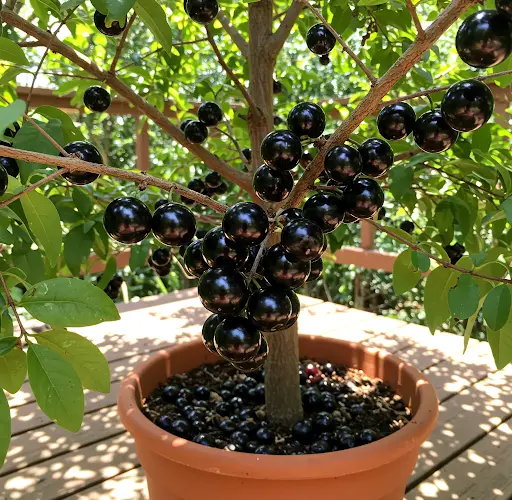How to Successfully Grow a Jabuticaba Tree in a Pot
Jabuticaba trees are known for their unique growth pattern, where fruit forms directly on the trunk and branches. These trees can take years to bear fruit when grown from seeds, but with the right techniques, you can cultivate a fruit-bearing tree in just three months. This guide will take you through the step-by-step process of planting and caring for a potted jabuticaba tree, even if you have limited space.
Choosing the Right Pot
The first step in growing a jabuticaba tree in a pot is selecting an appropriate container. A 40-liter pot is ideal, but you can also use a 20-liter pot or any other container with a minimum capacity of 20 liters. However, avoid using metal containers, as they can interfere with root development and moisture retention.
To ensure proper drainage, make six holes in the bottom of the pot. This prevents water from accumulating and reduces the risk of root rot.
Creating a Drainage System
To keep the area clean and avoid soil leakage, cover the drainage holes with a breathable material such as a paper towel, an old cloth, or a coffee filter. This step is essential in preventing soil from escaping while allowing excess water to drain properly.
Next, add a layer of granulated material at the bottom of the pot. Expanded clay, gravel, or small stones work well for this purpose. This layer should be about 2 inches deep to facilitate drainage and prevent water from stagnating around the roots.
Adding Soil and Preparing the Plant
Once the drainage system is in place, begin filling the pot with nutrient-rich soil. When the soil level reaches about 4 inches, it’s time to transfer the young jabuticaba tree into the pot.
When removing the plant from its original container, handle it carefully to avoid damaging the roots. The root ball (soil surrounding the roots) should remain intact to ensure smooth transplantation and prevent transplant shock.
Position the plant in the center of the pot and gradually fill in the sides with more soil. Once the root ball is about 50% covered, it’s time to apply fertilizer.
Fertilization for Faster Growth
Fertilizing your jabuticaba tree at the time of planting is crucial for its rapid growth and fruit production. Choose a high-quality organic fertilizer and distribute it evenly around the base of the tree.
After fertilizing, add more soil until the pot is nearly full. Lightly press the soil around the base of the plant to ensure stability. However, be gentle to avoid damaging the roots.
Final Touches and Mulching
To help retain moisture and regulate soil temperature, cover the top layer of soil with a protective material. Expanded clay, tree bark, or broken pieces of brick work well for this purpose. This step helps maintain optimal growing conditions for your plant.
Watering and Ongoing Care
Water the plant generously immediately after planting to help the soil settle and the roots establish themselves. Going forward, water the plant two to three times a day, ensuring that the soil remains moist but not overly saturated.
Proper drainage is crucial to avoid root rot. If water pools at the bottom of the pot, adjust the drainage system to prevent issues.
Choosing the Right Variety
For best results, select a hybrid jabuticaba variety. Hybrid varieties produce fruit three to four times a year, significantly more frequently than the traditional Sabará variety, which typically fruits only twice a year. Additionally, hybrid varieties tend to grow and mature more quickly.
Encouraging Faster Growth and Fruiting
To accelerate fruit production, follow a structured fertilization schedule. Consistently applying the right nutrients will ensure a healthy, high-yielding tree. Additionally, pruning and maintaining the tree’s overall health will further enhance fruiting potential.
Conclusion
Growing a jabuticaba tree in a pot is an achievable and rewarding project, even for those with limited space. By following the proper planting, fertilization, and maintenance techniques, you can enjoy fresh jabuticaba fruit in just a few months. Whether on a balcony, patio, or small backyard, this method allows anyone to cultivate their own fruit tree at home.



